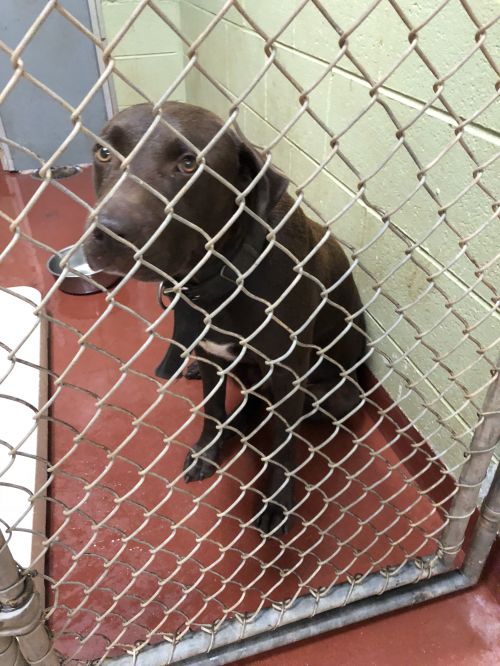Puppy’s Second Christmas – Please Read if you are considering a Puppy for Christmas
We like to post this article each year because SO many people want to give a puppy as a Christmas present. For most all cases, this is the worst idea ever and there are countless reasons why. People get emotional around the holidays and many times do it anyway, then we get the dogs and usually they are not in good shape, around January / February as owner surrenders. Stop and read this article and take a suggestion – Instead of giving a puppy to someone (who might not be ready) HERE IS THE BEST SOLUTION – Give them a leash and a collar wrapped in a box with a bow….then make the promise to pick the right puppy or dog when the TIME IS RIGHT FOR ALL! This is really a great idea when you think about it. Some folks will even foster before adopting to make sure a dog is a good fit for them! PLEASE avoid putting these innocent animals through so much turmoil and in some cases worse. If you really want a puppy or young dog, take it slow and think it through! You will be happier and so will the pup!

It is that time of year again…..and it happens every January to pretty much every rescue group we talk to and it happens to Atlanta Lab Rescue too…….Not even 24 hours after the excitement of a new puppy for Christmas and people are calling rescue groups and dumping puppies at the shelters all around Atlanta and beyond. It happens all the time – for some reason, somebody thinks it is a great idea to get a puppy for an unsuspecting person or child – NOT A GOOD IDEA! That is pretty much the worst idea for a Christmas gift. A puppy or a dog is a living animal that will require years of attention, exercise, food and care. Many lab and lab mix dogs live up to 16 years! That is a long time to commit to and if you are not ready and have not thought it out, Christmas is NOT the time to make such a far reaching decision.
On Christmas Day last year, we received a request to take in an owner surrender – on Christmas Day! Go figure….they couldn’t even wait a day. The family had grown tired of the dog already. Puppies are puppies and many dogs remain puppyish for years to come………..especially labs!
Here is the bottom line on Puppies –
They have lots of energy – because they are puppies
They pee on the carpet – because they haven’t been properly trained yet and their bladder is the size of a walnut
They bark – because they are unsure of their new surroundings
They don’t know how to walk on a leash yet – because they haven’t been trained
They can be fearful of small children – because small children generally don’t know how to treat a puppy
They can throw up – because you might be feeding them the wrong food or table scraps
They need periodic vet visits – because they are not fully immunized
They have to pee every 2 hours – because they are puppies and their bladder is the size of a walnut
They need consistent training and interaction – because they are puppies
That puppy will grow up to be an absolute reflection of the care you give it from day one!
Too often we get requests to take in dogs that are very young, not trained, snarly and generally not the best pets – why? Because someone treated that dog terribly as a puppy – neglected it and generally treated it like a stuffed animal. Well guess what, these wonderful little four legged ones are like little kids, they need constant attention and care to mature properly. And when we take in these young dogs, we spend money and time, neither of which is in great supply, to rehab them to be great dogs that we can adopt out again…..I personally adopted a puppy about two and a half years ago….I can tell you, I thought it out long before bringing him home! I made absolutely sure I could give him all he needed to grow into a great dog and he has done just that because I put in the time. For the first 2 weeks, taking him out to pee every 2-4 hours….around the clock! Guess what? It takes time and patience! Do you have a good supply of that after a 10 hour work day, child activities, dinner and general time to do household chores and such? You can’t just toss the dog in the back yard either…..
If this article is speaking to you, take time with your puppy or new dog……don’t make the mistake thousands will make in a few weeks, dropping the ball and dumping the dog at the shelter. The shelters become overrun quickly and owner surrendered dogs are the first to be put down….as in immediately. The shelters don’t have the space. If you end up giving your dog up to ANY rescue, make a financial donation to help defer costs.
Think about it long and hard before doing anything…remember, you are the one who wanted the puppy, you owe it to the puppy or dog to give it your best.

